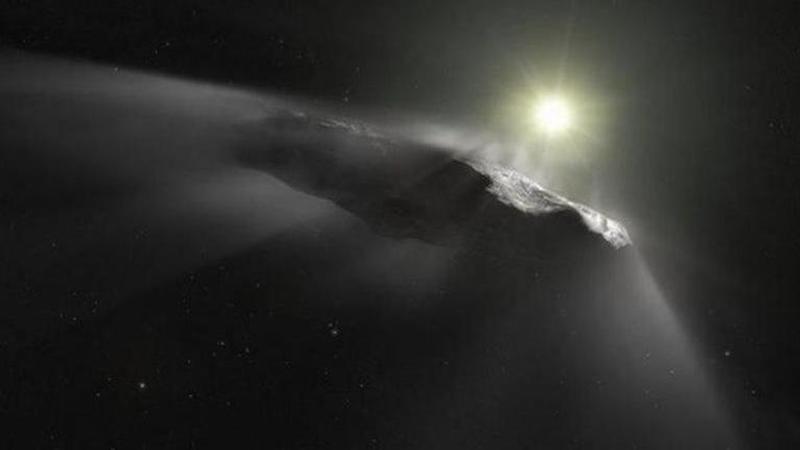Published 21:45 IST, November 15th 2021
New study reveals interstellar visitor Oumuamua wasn’t a nitrogen iceberg
Scientists from Harvard University has suggested that Oumuamua was not a nitrogen iceberg, as described by previous experts.

It was October of 2017 when a massive rocky and cigar-shaped vessel from interstellar space visited our solar system. Owing to the mysteriousness and an unknown point of origin, astronomers named it ‘Oumuamua’ which translates to a “messenger”. The mystery vessel was first spotted by the University of Hawaii’s Pan-STARRS1 telescope, funded by NASA’s Near-Earth Object Observations (NEOO) Program. The interstellar visitor has become a hot topic yet again as a new team of scientists from Harvard University has suggested that Oumuamua was not a nitrogen iceberg, as described by previous experts.
Oumuamua was a nitrogen iceberg, previous studies suggested
According to a report by Live Science, astrophysicists from the Arizona State University- Alan Jackson and Steven Desch had suggested that Oumuamua, which was classified as a comet, was an iceberg composed of nitrogen. Initially, scientists were baffled over the speed at which the comet was traveling (87.3 kilometers per second) and were not able to determine how the sun’s gravitational pull had no effect on it as it was departing our solar system.
As an explanation of the strange phenomenon, the duo explained that the comet’s propulsion was due to nitrogen all over it, which evaporated due to the sun’s heat and propelled it at an enormous speed. What's baffling is that despite its size, 400 to 800 meters long and 35 to 167 metres wide, was able to maintain such a speed.
New theory tells a new story
The aforementioned theory has now been challenged by a paper published by Harvard astrophysicists Amir Siraj and Avi Loeb in the journal New Astronomy. The duo has suggested that nitrogen in the universe is not enough to make an object like 'Oumuamua'. As per Live Science, the new study states that pure nitrogen is extremely rare and has only been found in Pluto, and that too is just 0.5% of its total mass. What's more, is that even if we manage to accumulate all the pure nitrogen from every Pluto-like planet in the universe, it would still not be enough to create an object that big.
Although Siraj asserted that the mystery surrounding the object still exists and all possibilities need to be considered before jumping to any conclusion.
Image: Twitter/@fcain
Updated 00:30 IST, November 16th 2021



